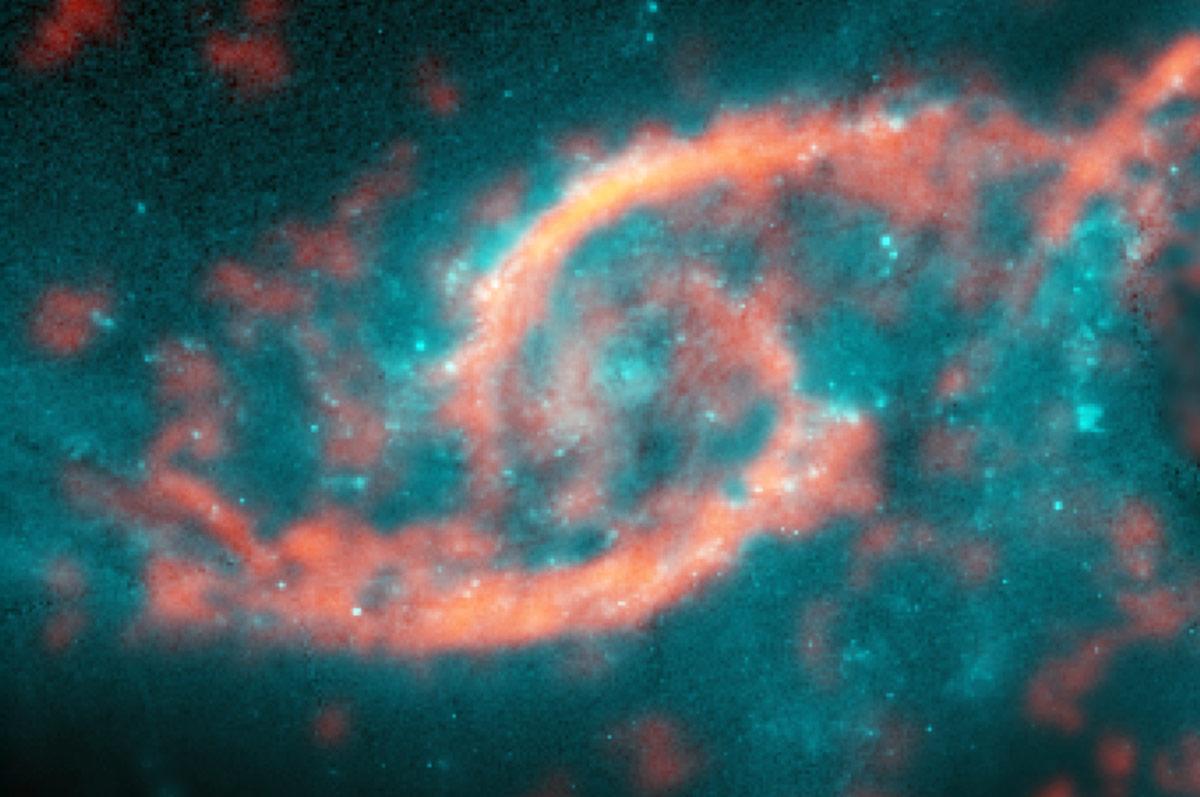Colliding galaxies create stunning 'eyes in space' star formation
'Galactic eyelids last only a few tens of millions of years, which is incredibly brief in the lifespan of a galaxy'

Your support helps us to tell the story
From reproductive rights to climate change to Big Tech, The Independent is on the ground when the story is developing. Whether it's investigating the financials of Elon Musk's pro-Trump PAC or producing our latest documentary, 'The A Word', which shines a light on the American women fighting for reproductive rights, we know how important it is to parse out the facts from the messaging.
At such a critical moment in US history, we need reporters on the ground. Your donation allows us to keep sending journalists to speak to both sides of the story.
The Independent is trusted by Americans across the entire political spectrum. And unlike many other quality news outlets, we choose not to lock Americans out of our reporting and analysis with paywalls. We believe quality journalism should be available to everyone, paid for by those who can afford it.
Your support makes all the difference.A massive collision between two galaxies has created a spectacular 'eyes in space' star formation.
Astronomers used the ALMA telescope in the Atacama desert in South America to capture stunning images of the spiral galaxies, which are about 114 million light-years away towards the Canis Major constellation, which includes Sirius, the brightest star in Earth’s night sky.
The two galaxies, called IC 2163 and NGC 2207, are in the process of merging into one, which will happen over a — relatively — short timescale.

Dr Michele Kaufman, an astronomer formerly with The Ohio State University in Columbus, described the discovery in a paper in the Astrophysical Journal.
“Although galaxy collisions of this type are not uncommon, only a few galaxies with eye-like, or ocular, structures are known to exist,” she said.
“Galactic eyelids last only a few tens of millions of years, which is incredibly brief in the lifespan of a galaxy.
“Finding one in such a newly formed state gives us an exceptional opportunity to study what happens when one galaxy grazes another.”
The astronomers were able to make detailed measurements of the movement of carbon monoxide gas in the galaxy.
Carbon monoxide is a tracer of molecular gas, the fuel for star formation.
This revealed the gas in the outer portion of one galaxy’s eyelids was racing inward at speeds in excess of 100km a second.
However it quickly decelerated and the motion became more chaotic, eventually aligning itself with the rotation of the galaxy rather than continuing its rush toward the centre.
“Not only do we find a rapid deceleration of the gas as it moves from the outer to the inner edge of the eyelids, but we also measure that the more rapidly it decelerates, the denser the molecular gas becomes,” said Dr Kaufman.
“This direct measurement of compression shows how the encounter between the two galaxies drives gas to pile up, spawn new star clusters and form these dazzling eyelid features.”
The evidence in the images showed the computer simulations of what would happen during such collisions had been correct.
“ALMA showed us that the velocities of the molecular gas in the eyelids are on the right track with the predictions we get from computer models,” said Dr Kaufman.
“This critical test of encounter simulations was not possible before.”
Join our commenting forum
Join thought-provoking conversations, follow other Independent readers and see their replies
Comments